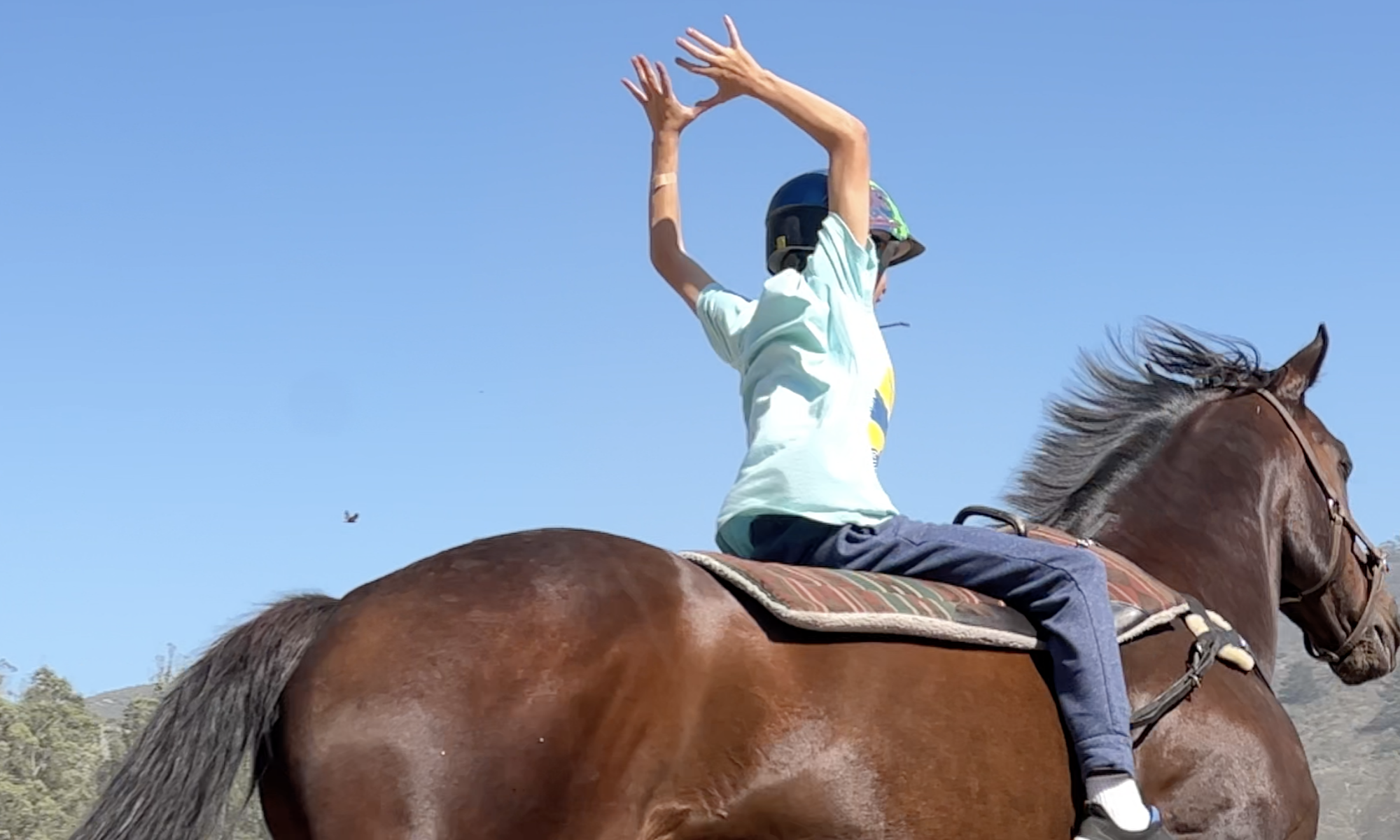I have a confession to make. Many of you have seen photos of me teaching the kids vaulting tricks, including standing on a moving horse. My confession; I’ve taught hundreds of kids to do it, but I haven’t done it. Ever. Because I was always too scared as a kid to let go and I never trusted the horse or the person holding the longe rope to take care of me. Every time a student trusts me and the horse enough to try, I’m left breathless.
You see, at Square Pegs, it’s not about what we can teach you. It’s about believing you can do the impossible and then actually doing it. We believe that nobody has ever taught a student anything. Learning comes from within the student. As a teacher, that’s a really humbling thought.
I could write on and on about all the compassion that we show for the animals here and how that inspires the students. I could tell you how we all work at the same important, dirty and difficult tasks that it takes to run a ranch with 20+ horses. The real truth is that the concept of EveryOne Fits is all about the way the animals see us and how that changes us.
Because the horses and other animals don’t care about the label on your shoes, or that you talk with a funny accent, walk with a limp or that you repeat yourself when you are excited. The barn dog doesn’t care that you spent last night in a homeless shelter, but she does know that you are feeling fearful. The crazy goats will make you smile even if you flunked your spelling test yesterday.
The animals teach us a few absolutes too; that compassion always conquers fear or that some days were just meant for letting the sun shine on your face and for breathing clean air.
I don’t need to tell you that our world is changing faster than ever before. That our children will inherit a vastly different planet. The time has come to take a harsh look at how we teach and how our children are taught and what they are learning and what they aren’t. Rote memory and overfilled classrooms will never teach them to accept themselves and to appreciate their own curiosity.
These animals will.
Our animals are rescues, throwaways, retirees. Our students deal with autism, homelessness, drug addiction, loneliness and normal teenage angst. Here’s a quick idea of what Square Peg Horses have taught them:
Seeing the world set out full of disappointment and failure
A blinded truth
I was once blind
But was given a gift
To see through the eyes of a horse
A strength grows over all that is dark
Able to comprehend a person and see only what should be seen
Courageous and triumphant over the world’s complications
Believing I can do anything
Now that I’ve seen through the eyes of a believer
My life saving gift from a little grey horse.
from Through the Eyes of a Believer by Natalia Feliz
If someone needs a helping hand, the
animals will be there.
If someone feels restricted and isolated,
an animal will encourage them
written by Amy Bell
A HORSE’S FRIEND
A horse’s friendship is like a dream
Brushing his hair
Feeling comfortable
Next to me
Riding on his back
Is like floating in the sky
Why do horses have to die?
Will they go to heaven
Just like us?
submitted anonomously by a Square Peg student
So, with the efforts of the horse, the staff, some fantastic volunteers, we strive to inspire people:
to own their education
to own their experience
and ultimately to own their actions.
Because this makes us better people.
Because this is what it means to turn “I wish” into “I can.”
I humbly ask you to join us in this work by your support as we change our world one horse, one student at a time.
Click here to make a donation.
Thank you.










